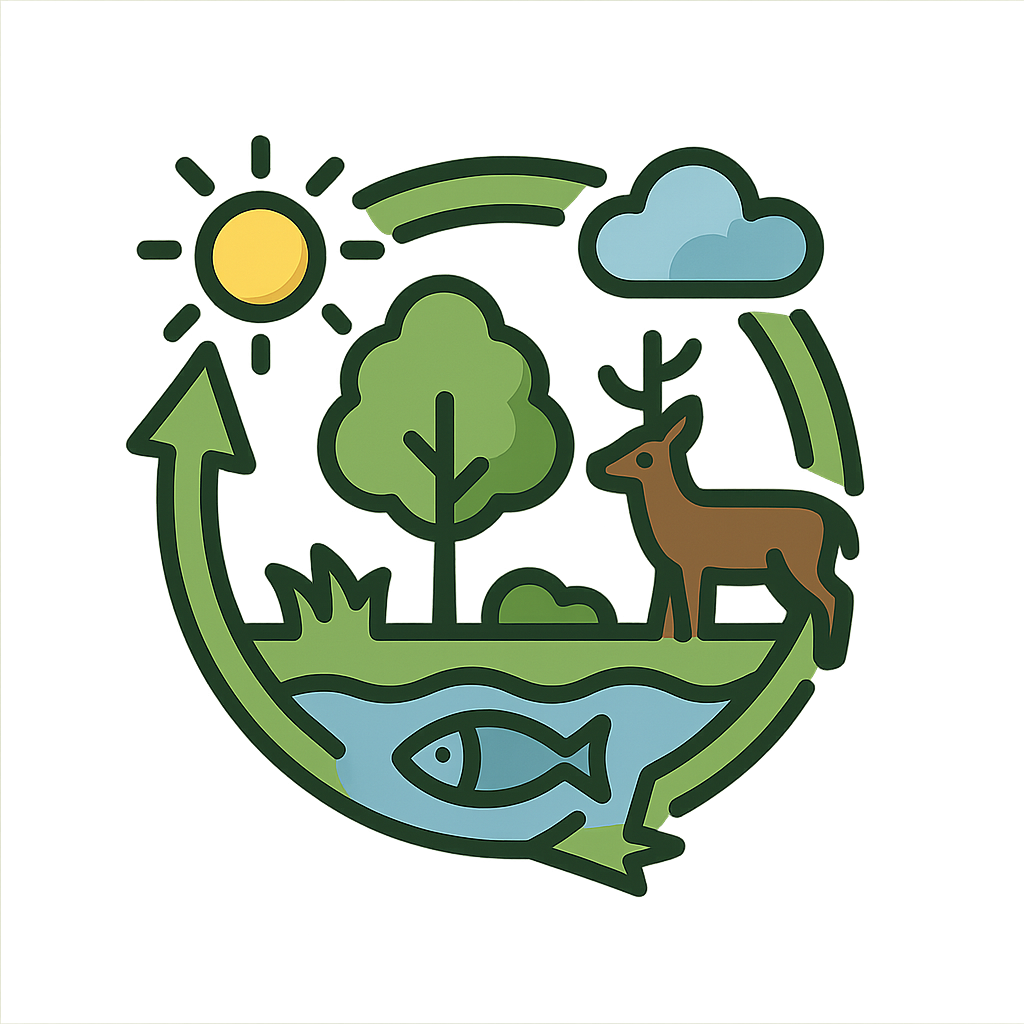The Secret Team of the World
I am the silent agreement between a squirrel and an oak tree. The squirrel, with its twitching nose, buries an acorn for the winter, forgetting where it left it. In the spring, a tiny new oak tree sprouts, a secret gift planted by a forgetful friend. I am the shimmering stage of a quiet pond, where a dragonfly with wings like stained glass rests on a lily pad. The lily pad gives the dragonfly a safe place to land, and the dragonfly eats tiny insects that might harm the pond's plants. I am the partnership between a wiggly worm and a cheerful robin in a city park. The worm tunnels through the earth, making the soil healthy for the grass, while the robin finds a delicious breakfast. I connect the living to the non-living, too. I link the warm, golden sunlight to the green leaves of the oak tree, giving it the energy to grow tall. I am the cool water of the pond and the rich, dark soil of the park. I am the invisible web that joins every plant, animal, rock, and drop of water into one big, bustling family. Can you guess my name?
I am an Ecosystem. It might sound like a complicated word, but it’s actually quite simple. The first part, “eco,” comes from an old word that means “home.” The second part, “system,” means a group of parts working together as a team. So, you can think of me as a “home team.” For thousands of years, people saw all my individual players. They saw the clever squirrel, the strong tree, the graceful dragonfly, and the hungry robin. They saw the sun, the soil, and the water. But they didn't always see the whole team playing together. They didn't have a word for the complete game, with all its rules and secret connections. Then, in 1935, a brilliant and observant scientist from England named Arthur Tansley finally gave me my name. He was like a sports announcer who saw that it wasn’t just a bunch of individual players running around; it was a coordinated team. He explained that my team has two types of players. The living players—the plants, animals, and even tiny bacteria you can’t see—are called the biotic factors. Think of them as the forwards, defenders, and goalie on a soccer team. But a team can't play without a field, a ball, or air to breathe, right? These are my non-living, or abiotic, players. They include the sunlight that provides energy, the water in the stream, the rocks, the soil, and the air itself. Arthur Tansley helped everyone understand that you need both the biotic players and the abiotic field to have a complete and working ecosystem. He gave the world a name for the amazing home team that is all around us.
You might be surprised to learn that I am everywhere. I can be as enormous as the deep blue ocean, filled with giant whales and glowing jellyfish. I can be as vast as a desert, where cacti store water and lizards skitter across the sand. But I can also be as small as the world inside a single puddle after a rainstorm, teeming with microscopic life. A fallen log in the forest is one of my teams, and so is the garden in your backyard. My teams work best when all the players are in balance. The trees provide enough acorns for the squirrels, but not so many that the forest is overrun. The robins eat some worms, but plenty are left to keep the soil healthy. Sometimes, human actions can knock my team off balance, like a player breaking the rules of the game. Pollution can make my water sick, and removing too many players, like cutting down a whole forest, can make it hard for the team to recover. But here is my favorite secret of all: you are on the team, too. Every person is a powerful player in my story. When you help plant a tree, pick up litter, or simply learn about how my connections work, you are helping your home team stay healthy and strong. You are part of this incredible, interconnected world, and you have the power to be a star player.
Reading Comprehension Questions
Click to see answer
